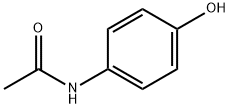2-Aminofluorene , 98% , 153-78-6
Synonym(s):
2-Fluorenamine;2-Fluorenylamine
CAS NO.:153-78-6
Empirical Formula: C13H11N
Molecular Weight: 181.23
MDL number: MFCD00001125
EINECS: 205-817-8
| Pack Size | Price | Stock | Quantity |
| 1G | RMB33.60 | In Stock |
|
| 5G | RMB116.80 | In Stock |
|
| 25G | RMB397.60 | In Stock |
|
| 100g | RMB1393.60 | In Stock |
|
| 500g | RMB4876.80 | In Stock |
|
| others | Enquire |
PRODUCT Properties
| Melting point: | 124-128 °C (lit.) |
| Boiling point: | 304.35°C (rough estimate) |
| Density | 1.0941 (rough estimate) |
| refractive index | 1.6118 (estimate) |
| storage temp. | Keep in dark place,Inert atmosphere,Room temperature |
| solubility | soluble in Ether,Alcohol |
| form | powder to crystal |
| pka | 4.34±0.20(Predicted) |
| color | White to Orange to Green |
| Water Solubility | <0.1 g/100 mL at 19.5 ºC |
| BRN | 1945861 |
| CAS DataBase Reference | 153-78-6(CAS DataBase Reference) |
| NIST Chemistry Reference | Fluoren-2-amine(153-78-6) |
| EPA Substance Registry System | 2-Aminofluorene (153-78-6) |
Description and Uses
Occupational exposure to polycyclic aromatic amines (PAA) has
occurred historically in the rubber, textile, and dye industries.
Some sources of nonoccupational exposure to PAAs include
inhalation of tobacco smoke, emissions from heated cooking oil
and diesel engine exhaust, and dermal exposure to hair dyes.
During the 1870s, the first aromatic amine dyes were
manufactured in Germany (dyes of natural origin were used
prior to the synthesis of dyes). In 1895, a physician by the name
Rehn reported a cluster of patients who had developed bladder
cancer. He observed that all of the affected workers were
employed at a site in Germany that manufactured fuschsin dye.
The workers had all been exposed to large amounts of intermediate
arylamines. The United States first started manufacturing
dyes in the early 1900s when trade between the
United States and Germany was halted during the First World
War. DuPont was the first company to begin manufacturing
synthetic dyes in the United States, and shortly thereafter
(1930s) the physicians employed by DuPont also started
reporting an increased incidence of workers who had developed
bladder cancer. During 1947, a physician by the name of
Mengellsdorf who was employed by DuPont reported that
100% of the workers who handled the chemical betanaphthylamine
had developed bladder cancer. By the 1950s,
Chinese dye manufacturers reported the development of
bladder cancer in workers who handled benzidine. Evidence of
the development of bladder cancer associated with the manufacture
of dyes continued to mount, and during the 1970s dye
manufacturing was discontinued in the United States and was
taken over by developing nations. During the early 1970s, the
US Occupational Safety and Health Administration (OSHA)
began regulating aromatic amines that had been associated
with the development of bladder cancers. During the 1980s,
DuPont reported retrospectively that 316 of their dye
manufacturing workers had developed bladder cancer prior to
the discontinuation of dye manufacturing in the United States.
During the 1990s, the first reports of bladder cancer in the
Chinese dye manufacturing industry became public.
Hair dye products manufactured prior to the mid-1970s
contained chemicals that were shown to produce cancer in rodents. Some of these chemical included aromatic amines.
The manufacturers of hair coloring products began reformulating
their products to remove these potentially carcinogenic
compounds from their products beginning in the mid-1970s. It
is not clear if some of the ingredients in contemporary hair
products can cause an increased risk of cancer. The US National
Cancer Institute reported that there may be an increased risk of
developing non-Hodgkin’s lymphoma in people who used hair
dyes prior to the 1980s; however, the data are limited and often
inconsistent.
PAAs are used in the rubber, textile, and dye industries. They are used as intermediates in the manufacture of plastics, drugs, and carbamate pesticides. The aromatic amines 2-aminofluorene and N-acetyl aminofluorene were being developed during the 1930s for use as pesticides; however, they were found to be carcinogenic in laboratory animals. They were never marketed as pesticides.
Safety
| Symbol(GHS) |   GHS07,GHS08 |
| Signal word | Warning |
| Hazard statements | H302-H341-H351 |
| Precautionary statements | P264-P270-P301+P312+P330-P501-P201-P202-P280-P308+P313-P405-P501a |
| Hazard Codes | Xn |
| Risk Statements | 68-40 |
| Safety Statements | 45-36/37-24/25 |
| WGK Germany | 3 |
| RTECS | LL5075000 |
| HS Code | 29214980 |
| Hazardous Substances Data | 153-78-6(Hazardous Substances Data) |



